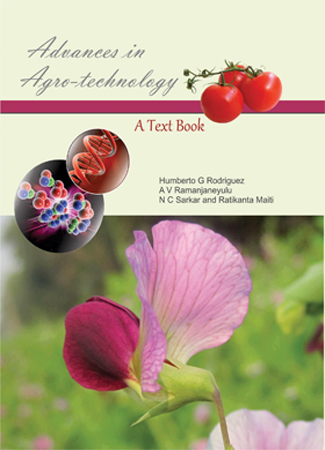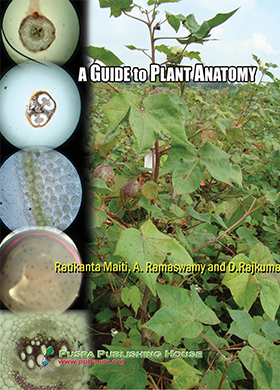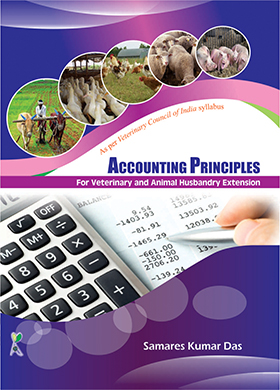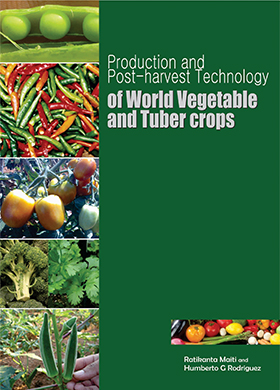Introduction
Among the major pests of agricultural crops, weeds alone caused severe yield losses ranging from as low as 10% to as high as 98%. It should be emphasized that yield losses caused by weeds could vary from crop to crop and from region to region for the same crops, in response to many factors that include weed pressure, availability of weed control technology, cost of weed control and level of management practices. Among different types of weeds, parasitic weeds are serious pests in agricultural fields. Weeds that attack other plants through linkages and draw partially or completely their nutrition from the host are known as parasitic weeds. They attach themselves either to the roots or the shoots of the host plants and survive on food material available in them. They attach themselves either to the roots or the shoots of the host plants and survive on food material available in them. Parasitic weeds can be difficult to eradicate because they often produce large numbers of long-lived seeds. It is also challenging to identify infestations before monetary losses arise because parasitic plants that attack host roots can do significant harm to agricultural plants before they emerge from the soil. The most economically important parasitic weeds are the broomrapes (Orobanche), striga (Striga asiatica) and dodders (Cuscuta spp.) damaging different crops. In southern Europe, Central Asia and Mediterranean areas, the most damaging parasitic weeds are broomrapes (Orobanche spp., Orobanchaceae), obligate root parasites of important dicotyledonous crops that depend entirely on their hosts for all nutritional requirements. Orobanche, locally known as margoja, rukhri, khumbhi or gulli is an annual, branched, achlorophyllous, noxious, obligate root holoparasites that reproduces only by seeds. Broomrapes germinate only in response to specific chemicals released by the host plant. After germination, the seedlings attach to the host roots by the production of specialized feeding structures, described as haustoria that form a functional bridge into their hosts. The attached parasite performs as a powerful metabolic sink, commonly referred to as a “super sink,” effectively fighting with the host plant for water and mineral nutrition, creating host plant stress, and growth inhibition, resulting to a considerable decrease in crop output and distressed crop quality in infested fields.
The development of efficient control methods is hampered by the unique traits of this pathogenic weed (underground development, adhesion to the host roots). Additionally, a single broomrape plant can produce more than 5,00,000 seeds, each of which is known to survive in the soil for many years. As a result, the parasite has a high genetic capacity for genetic adaptation to environmental changes, such as host resistance, agronomic techniques, and herbicide applications. Two broomrape species (O. crenata and O. ramosa) attack mainly the crops of apiaceae family such as Daucus carota, Apium graveolens, Petroselinum sativum, Foeniculum vulgare and of fabaceae family viz., Vicia faba, Pisum sativum, Lens culinaris, Cicer arietinum and Medicago sativa. In most cases, O. crenata and O. ramosa attack the crops of solanaceae family like Lycopersicon esculentum, Nicotiana tabacum, Solanum tuberosum and Solanum melongena and cause the yield loss of more than 75%.
Orobanche Management
Management of Orobanche is very difficult mainly due to the certain reasons: it grows initially in underground location; its minute small seeds easily dispersed with several agents; longer seed viability; and it lacks a photosynthetic system, which could have been a potential herbicide target. Therefore, a major strategy towards Orobanche management should be taken to prevent its seed production from the existing population infesting crops as well as to deplete its seed bank reserve already present in soil. The following measures are very important to control Orobanche.
5.1. Preventive
Prevention is employed for minimizing the spread of Orobanche across and within the regions as well as to reduce its soil seed bank on gradual basis.
a) Clean crop seed should be used
b) Farm implements (ploughs, hoes) from an infested field should be cleaned before taking them to a new field
c) Quarantine should be followed properly
d) Avoid transfer of soil from infested area to a non-infested area
e) Avoid grazing animals in the infested area at least until the Orobanche has been removed
f) Application of natural synthetic stimulants: There are several natural stimulants, such synthetic analogues of Orobanche as GR 7, GR 24 and GR 45, which can induce germination. These stimulants should be applied well ahead of crop sown induce Orobanche germination, but, the seedlings wither away in absence of a suitable host plant amounting to “Suicidal germination.” Orobanche plants those survived may be controlled by tillage, manual weeding or contact herbicide, e.g. paraquat, diquat.
5.2. Cultural
a) Cropping system: Due to allelopathic interactions, it has been shown that intercropping of faba bean and pea with cereals like oat or fenugreek will lessen O. crenata infection (Fernandez-Aparicio et al., 2016).
b) Trap crops and catch crops: Trap crops promote broomrape seed germination but do not support parasitism. Catch crops support parasitism but are destroyed prior to broomrape flowering. There are some potential trap crops or “false crops” that offer the advantage of stimulating the germination of the root parasites without being parasitized them. The control of parasitic weeds with trap crops is one of the most economical and practical methods for small-scale commercial farming. The root exudates of many plant species are active in stimulating the germination of the seeds of Orobanche and Phelipanche spp. but for which they are not described as hosts. Examples of trap crops for broomrape include flax, mung bean, maize, fenugreek and sorghum. Berseem as a catch crop in Egypt is harvested repeatedly for forage in order to prevent the full development and seeding of the parasite.
c) Time of sowing: Late planting likely reduces Orobanche infestation in tobacco and other crop hosts. Late planting is a viable option where tobacco is the only remunerative crop.
d) Crop rotation: Crop rotation with trap crops (which promote Orobanche seed germination but do not support parasitism) or catch crops (which support parasitism but destroy Orobanche prior to flowering) can effectively hinder new seed production and hence reduce soil seed bank. A continuous flooding for about 1-2 months prior to planting of tomato is believed to suppress Orobanche species in tomato. Similarly rice-tobacco rotation for quite a long period is useful towards controlling Orobanche in tobacco since its seeds loose viability on flooding.
e) Maintain soil fertility: Broomrapes are frequently found on less rich soils. Nitrogen fertilizers over 120 kg per hectare can reduce the amount of broomrape infection.
f) Organic manure: Organic treatments, such as broiling, cattle, goat, layering, sheep manure and wood chips, have been reported to reduce broomrape infestation.
g) Irrigation: Positive effect of irrigation by reducing the number and dry weight of broomrape, attributing these results to better development of the faba bean’s root system.
h) Allelopathy: It results in less O. crenata infection in intercrops with fenugreek through the root exudates of fenugreek.
5.3. Mechanical and manual
a) Soil solarization: Soil solarization is an effective measure for controlling Orobanche. It can be adopted in seedling- raising nurseries on small plots of land and for growing profitable cash crops like vegetables. Solarization provided excellent control of Orobanche aegyptiaca and Orobanche ramosa & Orobanche crenata and ensured higher yield. Solarization controlled Orobanche crenata significantly and a yield increase to the level of 331%, 441% and 92% was recorded in faba bean, lentil and field pea, respectively in Syria.
b) Hand pulling: The main purpose of hand weeding is to prevent damage on host crop and seed production of the parasitic weed. It thus prevents enhancement of the parasitic weed seed bank in soil. Usually periodical hand pulling of Orobanche shoots 3-4 times per season before seed setting is advocated in a bid to reduce maximum of its seed population for the coming years. Hand weeding although labour-intensive, is useful particularly under light infestations and should be practiced as early as possible to avoid crop damage.
c) Mulching: Mulching is superior to fumigation as it cheaper and safer and involves no phytotoxicity or herbicide residues.
d) Flooding: Flooding for a long period may unable the viability/longevity of Orobanche seeds. A continuous flooding for about 1-2 months prior to planting of tomato reduces Orobanche infestation in tomato. Similarly flooding required for rice can be utilized for controlling Orobanche in tobacco if rice is included in the rotation.
e) Deep ploughing: Ploughing up to a depth of 20-25 cm during summer has been found effective towards reduction of Orobanche population and enhancement tobacco yield in the following season and Use of implement like SPEAR designed to remove tender Orobanche shoots.
5.4. Biological
Phytomyza orobanchae under the family: Agromyzidae and order: Lepidoptera is very effective to control Orobanche spp. It is native to the Mediterranean region, the main area of Orobanche infestation. Almost 47 fungi species are isolated from the species of Orobanchae, but a few proved effective against Orobanchae under field conditions. One such fungus is Fusarium oxysporum f. sp. orthoceras from which “Product F” was developed in the then USSR. It is mass reared on a medium of barley seeds and wheat straw and incorporated into the soil. It can cause massive damage to Orobanchae. Another important fungus is Fusarium arthrosporioides.
5.5. Chemical
a) Sheoran et al.(2014) and Punia et al. (2018) reported that foliar sprays of glyphosate twice; first 25 g ha-1 at 30 DAS and second 50 g ha-1 at 55-60 DAS provides 70 to 80% reduction in Orobanche shoots emerging from the soil, and 20 to 25% increase in seed yield of mustard. Glyphosate is a non-selective herbicide and kills all the green vegetation over which it is applied. The dose, timing and number of sprays of glyphosate optimized for mustard for Orobanche control are very specific, and therefore must be precisely followed with utmost care.
b) Soil fumigation with herbicides like dazomet (DMTT) granules at 300-350 kg ha-1 about 30-40 days before transplanting of tobacco is found effective. Similarly, metham (Vapum) @ 2000 lit ha-1 is quite effective against Orobanche.
c) Oxyfluorfen (Goal), selective herbicide to Indian mustard @ 200-250 g ha-1 as pre-emergence controls broad-spectrum of weeds along with Orobanche in mustard.
d) Linuron @ 0.5 kg ha-1 at 30 DAS caused complete control of Orobanche but simultaneously posed severe phytotoxicity to mustard. Therefore, pre-plant incorporation of Linuron into the soil may be advocated, which could render selective control of Orobanche in tobacco and brinjal
e) Soil-applied sulfonylurea has also been recently found to control Orobanche in tomato
f) MH-T @ 1.5 % spray on matured Orobanche shoots as post-emergence application
g) Allyl alcohol @ 0.1-3.2 % as post-emergence at 15-30 days after transplanting of tobacco proves quite effective against getting Orobanche infections
5.6. Host-plant resistance
In this approach, we focused on thedevelopment of herbicide-resistant crops. The control of broomrape without any detrimental effect on the crop or its yield was achieved by using Glyphosate on 5-enolpyruvylshikimate-3-phosphate (EPSP) synthase inhibitor-resistant oilseed rape. Oilseed rape (B. napus) that was infected with Orobanche and engineered with the aroA gene encoding a modified EPSP synthase completely prevented the development of the parasite after Glyphosate application to the transgenic plants. Transgenic lines resistant to glyphosate containing the ‘cp4 epsps. Gene along with a double mutant ‘als’ gene could provide long-term control of O. aegyptiaca in the highly affected areas.
5.7. Integrated Orobanche management
a) Soil solarization+ optimum/ higher nitrogen fertilization + selective and effective pre-emergence herbicide + post-emergence herbicide or hand weeding/interculture at the later stages.
b) Soil solarization or one or a few trap crops or crop rotation with rice where feasible or prolonged flooding if possible with high temperature (during summer) + optimum/ higher nitrogen fertilization +selective and effective pre-emergence herbicide + hand weeding/ interculture at the later stages.



.jpg)
.jpg)






